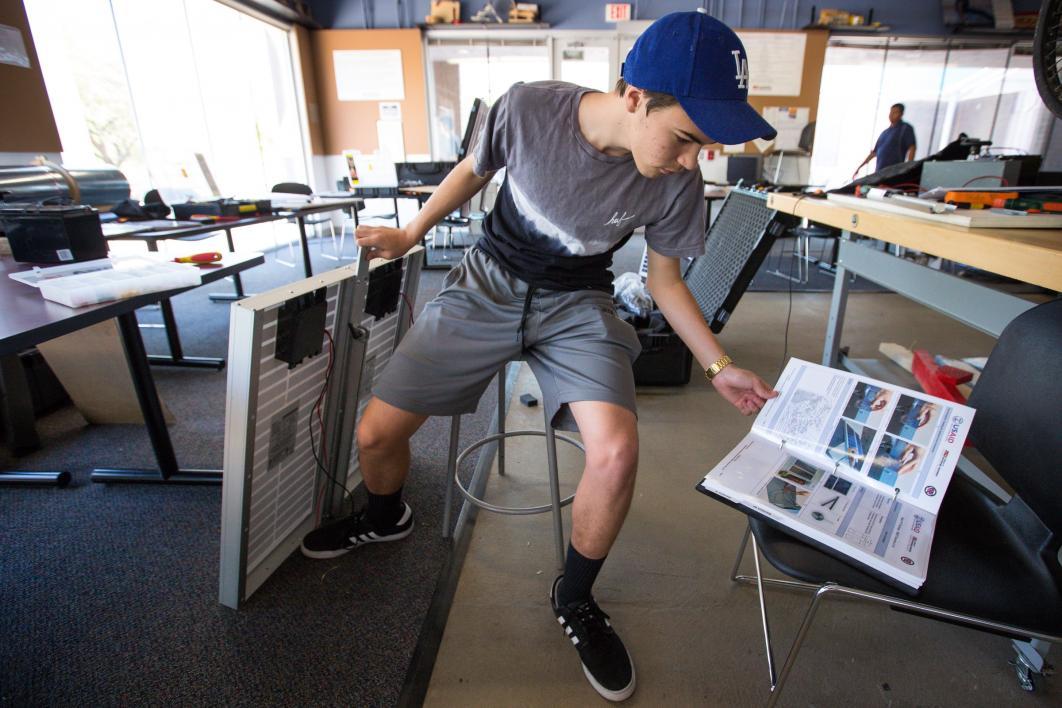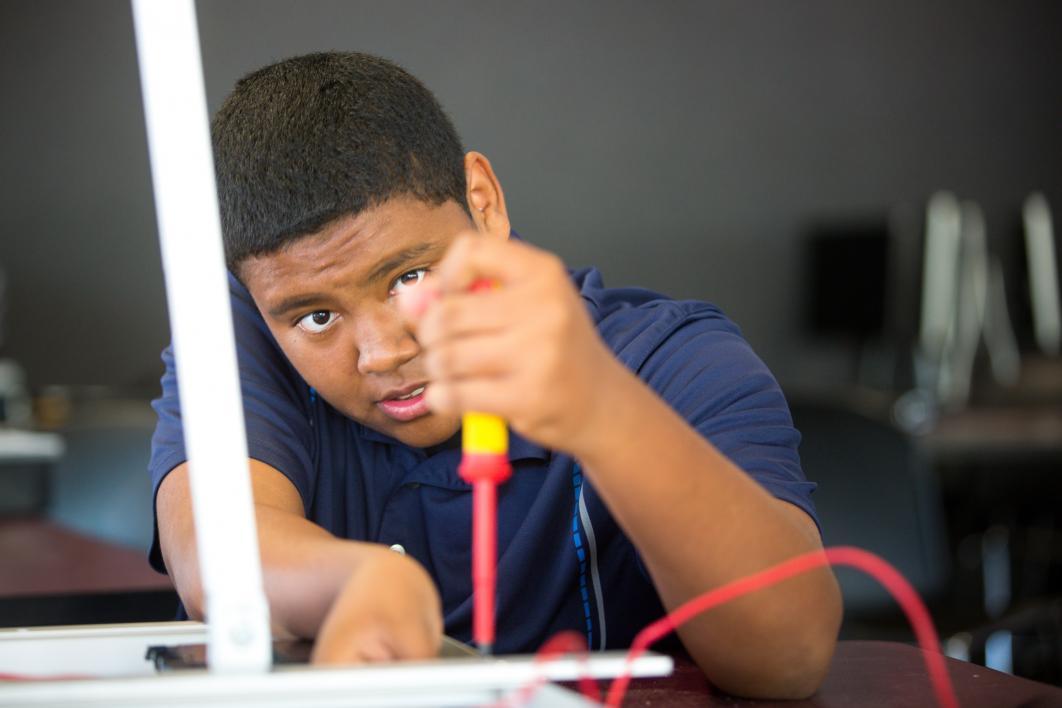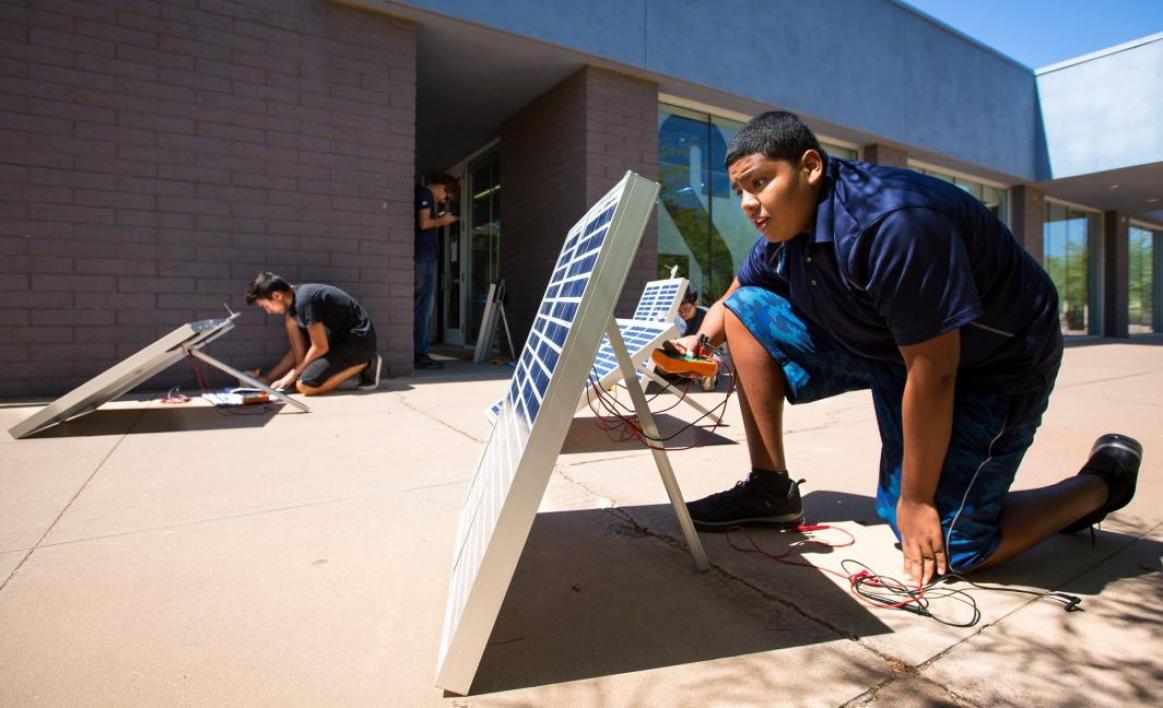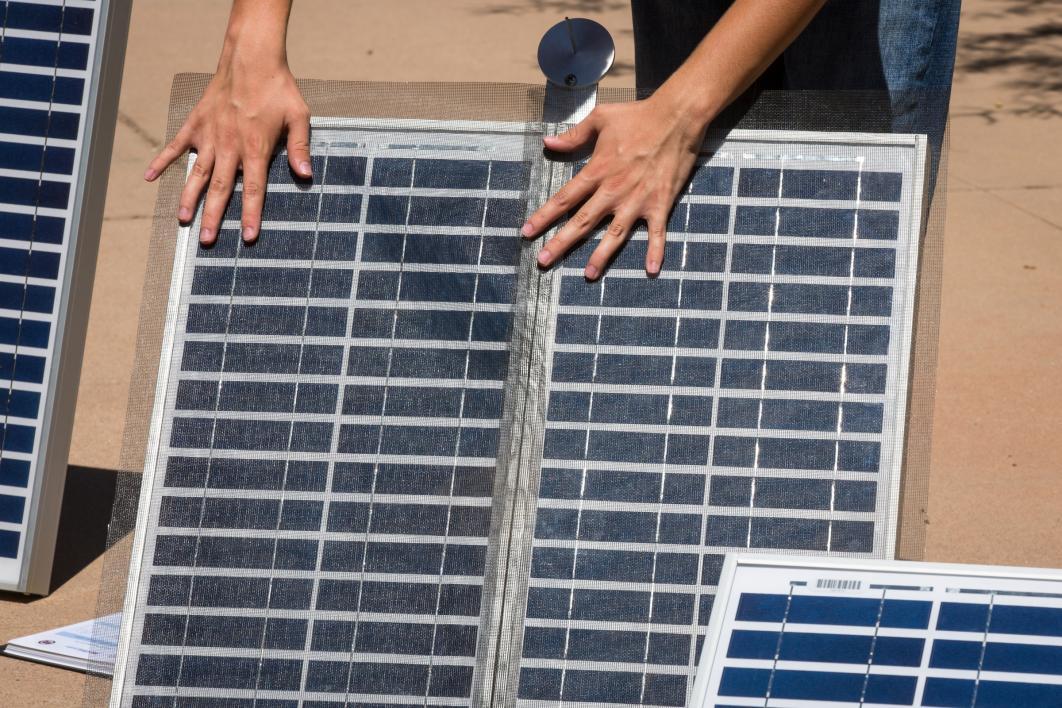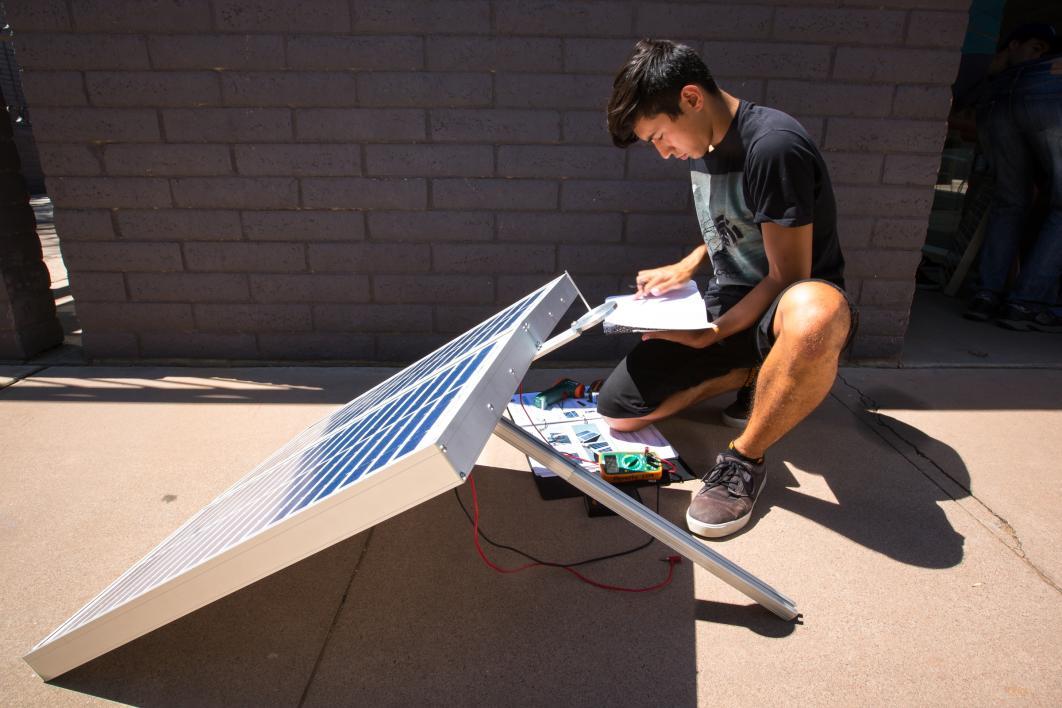Catching some rays at ASU solar camp
High schoolers get hands-on experience with the science behind solar
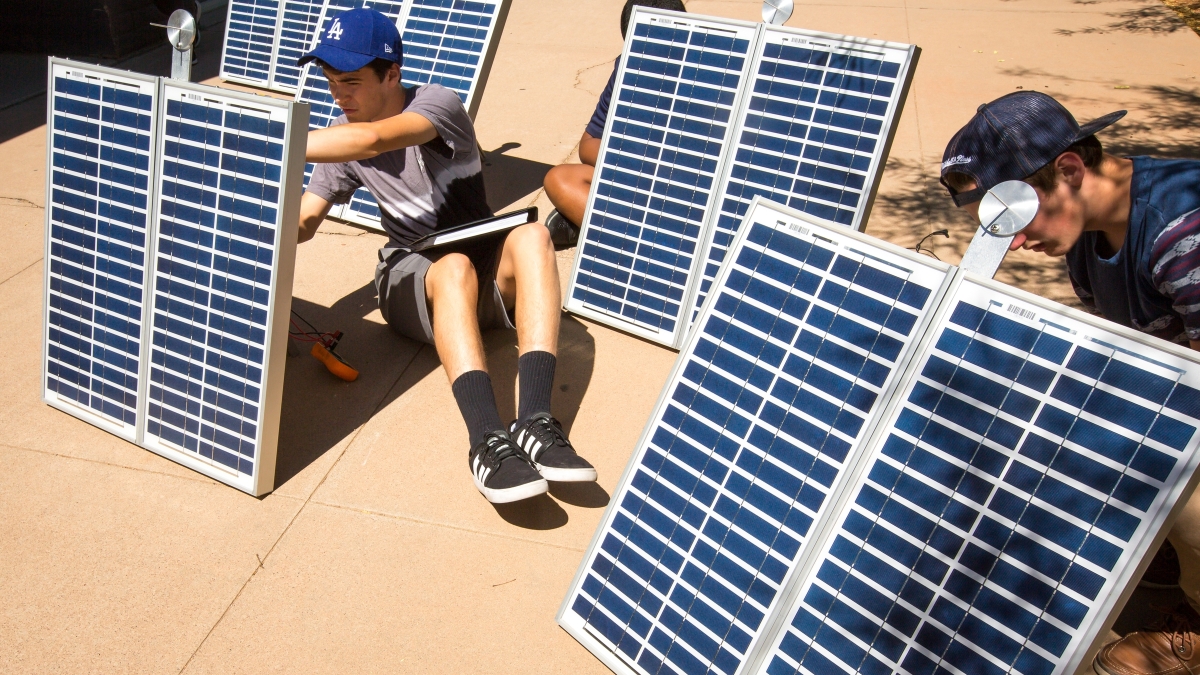
Scorching, squinting, sweating and learning — welcome to Arizona State University’s Solar Energy Camp, the hottest camp at the hottest university in the hottest state.
On a sizzling July morning down at the university’s Polytechnic campus, six students are setting up solar panels and attaching various measuring devices to them.
Joo Seung, 16, came from San Diego for the weeklong camp. He has been interested in renewable-energy sources since he was in elementary school.
“This year I was reaching out to find out where I could learn about solar energy,” he said.
Everything he found in California was geared toward college students. Seung did some of his own research on the internet but ended up getting lost in overly technical texts. He said he much preferred learning in class, with material that wasn’t aimed at someone with a doctorate in electrical engineering, which is where he said he wants to end up.
“I’ve learned a lot,” Seung said. “A lot of the resources (professor Arunachala Kannan) gave us were very informing.”
Kannan, a professor in the Engineering and Manufacturing Engineering Program in the Ira A. Fulton Schools of Engineering, provided each student with a kit including a battery, inverter, solar panel and other components. When assembled, it is a standalone system.
“The purpose is to give them basic electrical parameters,” Kannan said. He keeps lectures to a half-hour — it’s a camp, not a class — and then they get to work.
“I think they’re excited about doing hands-on,” he said.
They learn how solar modules work, power performance, safety and which parameters control performance. One aspect of the latter? “Once you get above 100 degrees, performance is not good,” Kannan said.
Panels need to be washed off. Dust hampers their performance. The most famous example of this is when the Curiosity rover stopped working on Mars because its solar panels were dusty. Scientists expected this, and they predicted that was it for the rover. However, wind blew the dust off, and Curiosity is still going strong.
The students set up panels in the sun on a sidewalk, measuring their angle and direction. The panels have sundials on them. At the end of camp, the students are responsible for a report including notes, pictures and measurements. It’s meant to cement what they’ve learned into their heads.
“When they submit a report, many things become clarified,” Kannan said.
Michael Geddis, 16, attends the American Leadership Academy high school in Queen Creek. The school has a STEM program that requires attending an outside enrichment program. They provide students with a list of possibilities, including Poly’s Solar Energy Camp.
“I really like the labs because I’m learning a lot,” said Geddis. “I like to learn.”
Top photo: Carlos Nunez, 15, of Tempe, and other members of Solar Energy Camp adjust the angle of their panels on the Polytechnic campus on July 13. Photo by Charlie Leight/ASU Now
More Science and technology

Celebrating 34 years of space discovery with NASA
This year, NASA's Hubble Space Telescope (HST) is celebrating its 34th anniversary of the world's first space-based optical telescope, which paved the scientific pathway for NASA's James Webb Space…

Making magic happen: Engineering and designing theme parks
The themed entertainment industry is widespread and diverse, encompassing everything from theme parks to aquariums, zoos, water parks, museums and more. The Theme Park Engineering and Design…

AI-equipped feeders allow ASU Online students to study bird behavior remotely
ASU Online students are participating in a research opportunity that's for the birds — literally. Online Bird Buddies is a project that allows students to observe birds remotely, using bird feeders…
